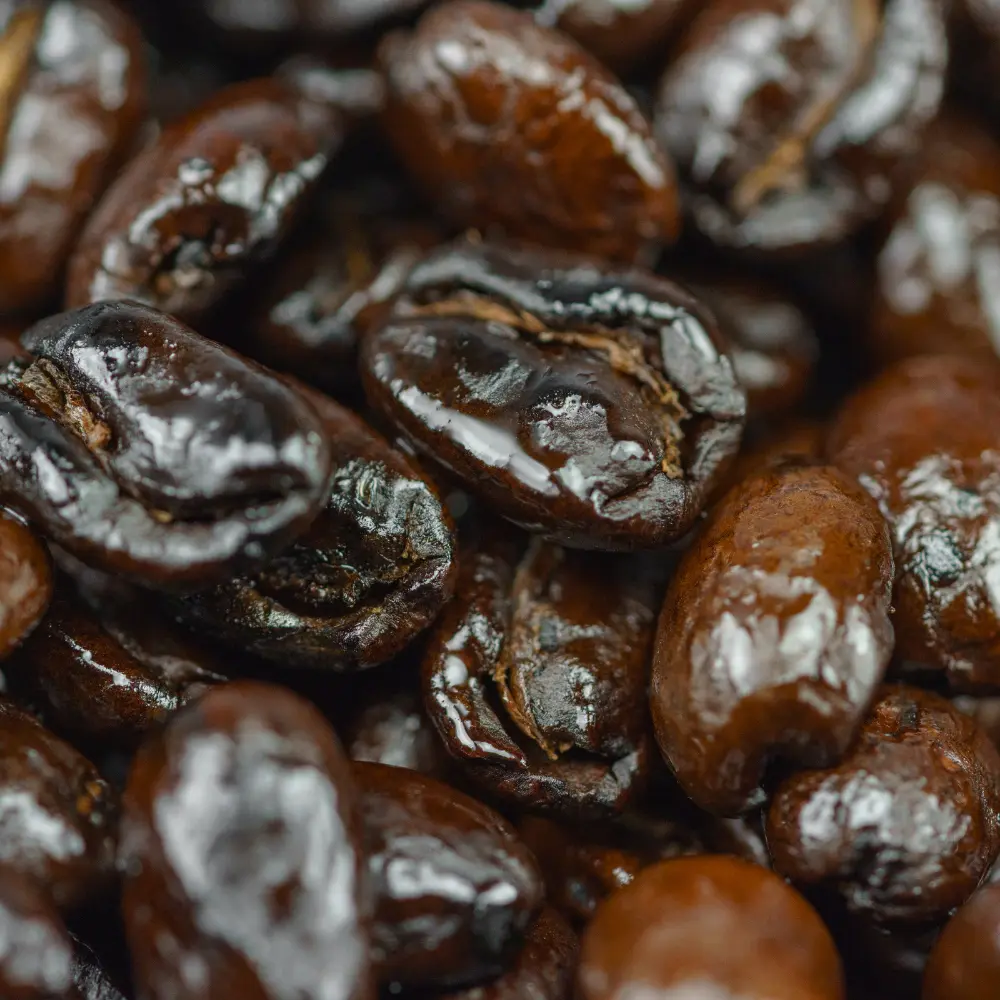Enter the mystical universe of coffee cupping, where the meticulous art of taste-testing and evaluating coffee meets the scientific realm of flavor and aroma analysis. The intriguing process of coffee cupping embarks on a captivating journey that enthralls coffee enthusiasts and professionals alike, revealing an unparalleled window into the intricacies that comprise the taste of your cherished morning brew. As the fervor for specialty coffee continues to rise, the inclination toward learning how to cup coffee is steadily increasing. The thirst for unlocking the secrets of coffee through this complex process aims to enhance the overall experience.
In this all-encompassing guide titled, “Coffee Cupping: Unveiling the Secrets of Coffee Tasting and Quality,” we plunge into the fascinating world of cupping coffee, delving into its roots and heritage, its importance in the coffee industry, and the systematic step-by-step process of how to cup coffee. With this guide, you will unravel the methodology behind this time-honored tradition, which enables experts and amateurs alike to assess and appreciate the intricacies of flavors and aromas. By doing so, we ultimately contribute to the evolution and advancement of the specialty coffee industry.
Whether you are an amateur coffee sipper, a well-versed coffee aficionado, or a professional barista looking to finesse your skills, this guide caters to all. It provides you with a plethora of knowledge and tools to set out on your very own journey. Get ready to unlock the mysteries of coffee tasting and quality, which are deeply embedded in every single cup of joe.
Coffee Cupping: Key Takeaway
- Coffee cupping is a Professional tasting procedure utilized to assess and compare the aroma, flavor, and quality of coffee, playing a critical role in the specialty coffee industry.
- Developing a discerning palate for cupping coffee necessitates consistent practice, unwavering dedication, and exposure to a diverse range of flavors and aromas.
- Attending workshops, courses, and becoming a member of coffee-tasting clubs or communities can significantly improve one’s skills and broaden their knowledge.
- The SCAA Coffee Taster’s Flavor Wheel and standardized scoring systems like the SCA Cupping Protocol offer a shared language for describing and evaluating coffee experiences, providing a common vocabulary for the industry.
- Cupping coffee has a significant impact on numerous aspects of the coffee supply chain, ranging from sourcing and purchasing decisions to refining roasting techniques and identifying industry trends.
Introduction to Coffee Cupping

Coffee cupping is a process steeped in the intricacies of evaluating and contrasting the manifold qualities, flavors, and scents of disparate coffee beans. (1) It is an indispensable technique employed by seasoned professionals in the industry to assay and grade the excellence of coffee, safeguarding that only the most superior beans find their way into the hands of consumers. In this section, we shall venture into the annals and genesis of this professional tasting practice, scrutinize its significance in the coffee industry, and expound on the sundry experts who partake in this multifarious practice.
History and Origin of Coffee Cupping
The concept of cupping coffee was born in the nascent stages of the coffee trade when merchants were hard-pressed to devise a means of gauging the standard of coffee beans before acquiring them. This distinctive professional process evolved and took on a more sophisticated and standardized form as the industry burgeoned and the demand for top-tier beans escalated.
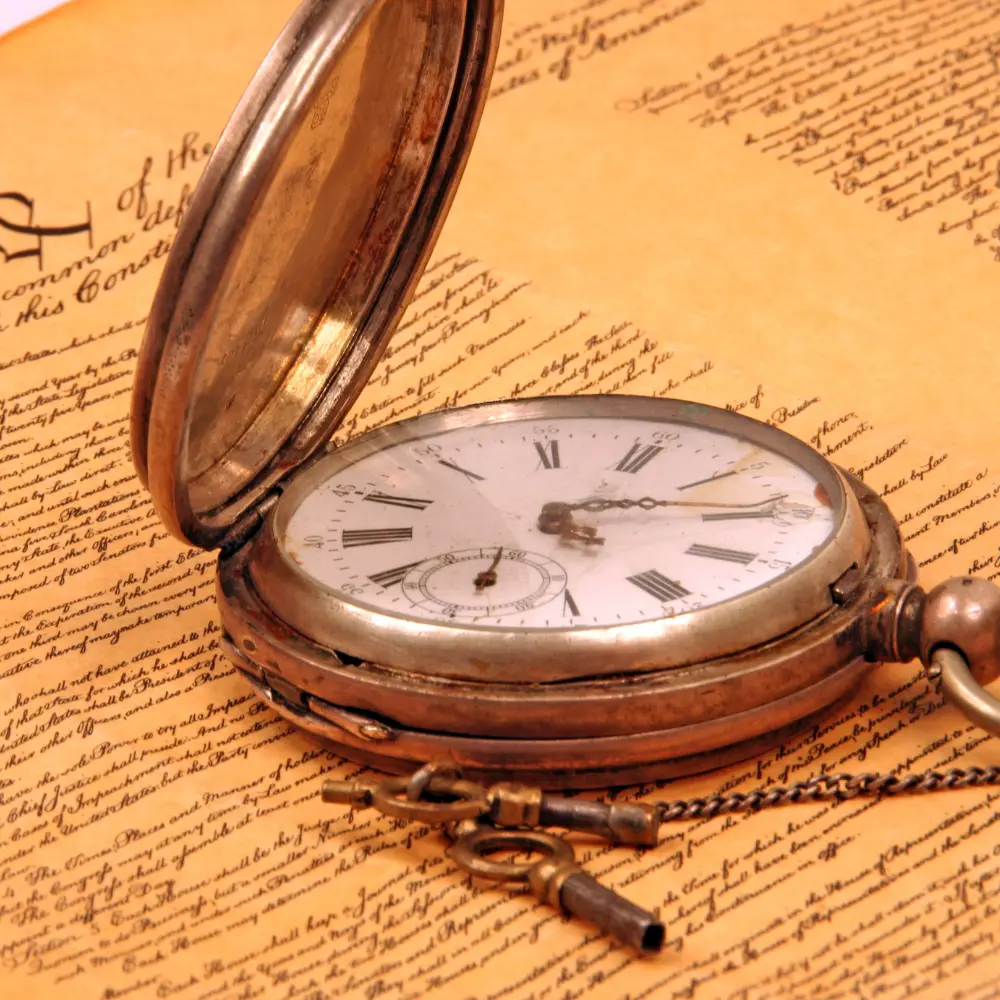
It was during the late 19th century that cupping coffee began to assume a more structured and institutionalized form, with coffee tasters devising particular techniques to scrutinize the bouquet, relish, and defects in the beans. Over time, This tasting technique had assumed a veritable and renowned practice in the industry, with coffee brokers and buyers depending on it to procure the finest beans from every corner of the world.
The Importance of Coffee Cupping in the Coffee Industry
Cupping Coffee is of paramount importance in upholding and elevating the overall caliber of coffee in the global market. By providing a standardized method for scrutinizing the beans, cupping ensures coherence and impartiality in the evaluation of quality, empowering buyers to make informed decisions when procuring beans.

With the burgeoning growth of the specialty coffee industry, cupping coffee has assumed even greater importance, as roasters, baristas, and consumers seek out higher-quality beans that manifest distinctive and singular flavors. This tasting technique enables industry experts to identify exceptional beans and showcases their unique attributes, stimulating innovation in production, processing, and roasting methodologies.
Moreover, it helps identify potential concerns in coffee production and processing, enabling farmers and producers to address these issues and continuously refine the quality of their beans.
Professionals Involved in Coffee Cupping
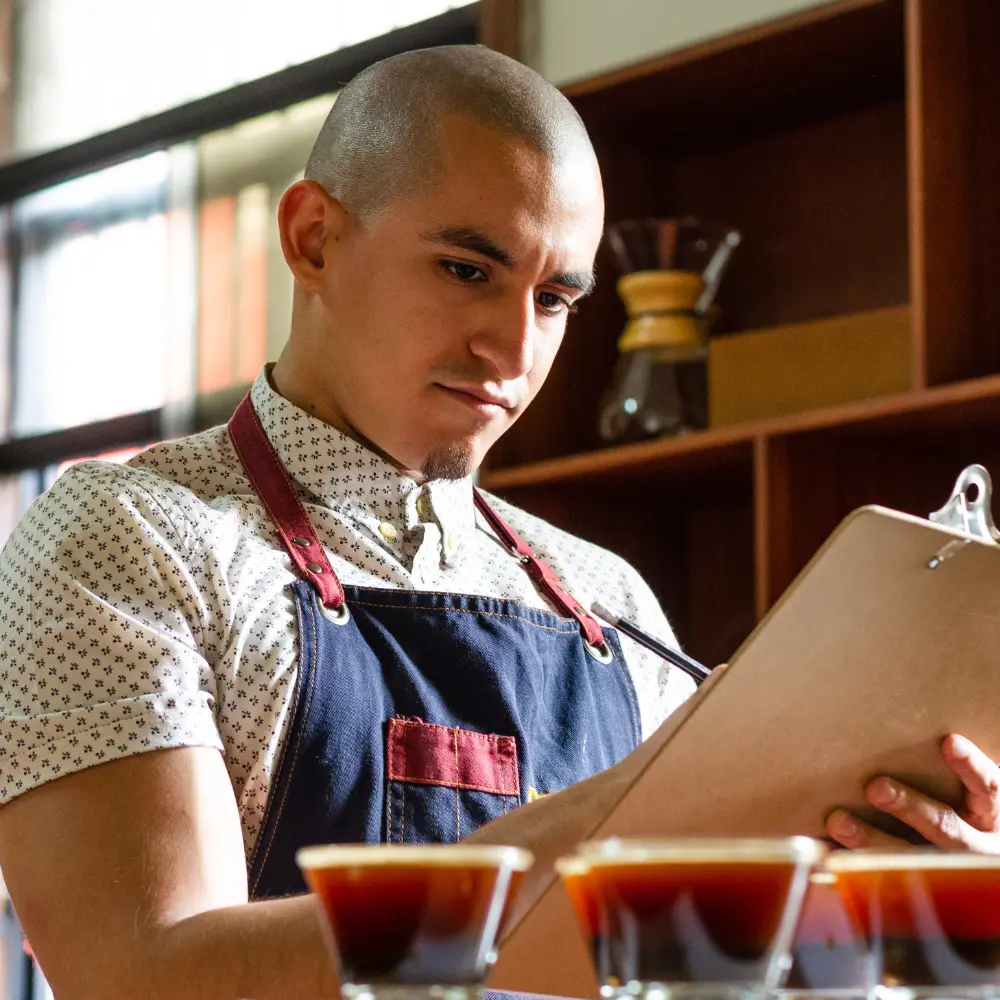
Diverse professionals partake in cupping coffee, each with their distinct roles and responsibilities. These professionals encompass:
- Coffee Buyers and Importers: They rely on coffee cupping to appraise and cherry-pick the best beans for their clients, ensuring that they purchase high-grade coffee that meets their specific requisites and flavor profiles.
- Coffee Roasters: They depend on this tasting procedure to ascertain the ideal roasting profiles for each bean, ensuring that the desired flavors and aromas are engendered during the roasting process.
- Quality Control Specialists: They utilize cupping coffee to monitor the uniformity and quality of coffee beans across the supply chain, from the farm to the final product.
- Baristas and Cafe Owners: They employ this professional tasting technique to refine their offerings, selecting beans with unique flavor profiles that will captivate their patrons and complement their menu.
- Coffee Aficionados and Connoisseurs: They engage in cupping coffee to enhance their knowledge and admiration of coffee, exploring the wide array of flavors and aromas that divergent beans have to proffer.
The Coffee Cupping Process
The coffee cupping process is a meticulously structured approach to evaluating the beans, enabling tasters to scrutinize and juxtapose their flavors, aromas, and overall quality. In this section, we will expound on how to cup coffee, commencing with the selection and preparation of the beans, followed by an elucidation of the indispensable tools necessary for cupping coffee, and culminating in a step-by-step guide to this intricate procedure itself.
Selecting and Preparing the Coffee Beans
To commence mastering the art of coffee cupping, the initial step is selecting and preparing the coffee beans. The crux of a successful session lies in using freshly roasted beans, ideally roasted within the preceding 24 to 72 hours, to ensure the most precise representation of their flavors and aromas.

When choosing beans for cupping, opt for an assortment of origins, processing methods, and roast levels to allow for a more all-encompassing evaluation of their distinctive attributes. Once the beans are chosen, accurately weigh out a consistent amount for each sample – generally around 8.25 grams – and grind them to a medium-coarse consistency, akin to the texture of kosher salt.
The preparation of the beans is of paramount importance, as it guarantees that the brewing process extracts the flavors and aromas consistently across all samples, providing an equitable and dependable comparison.
The Essential Tools for Coffee Cupping
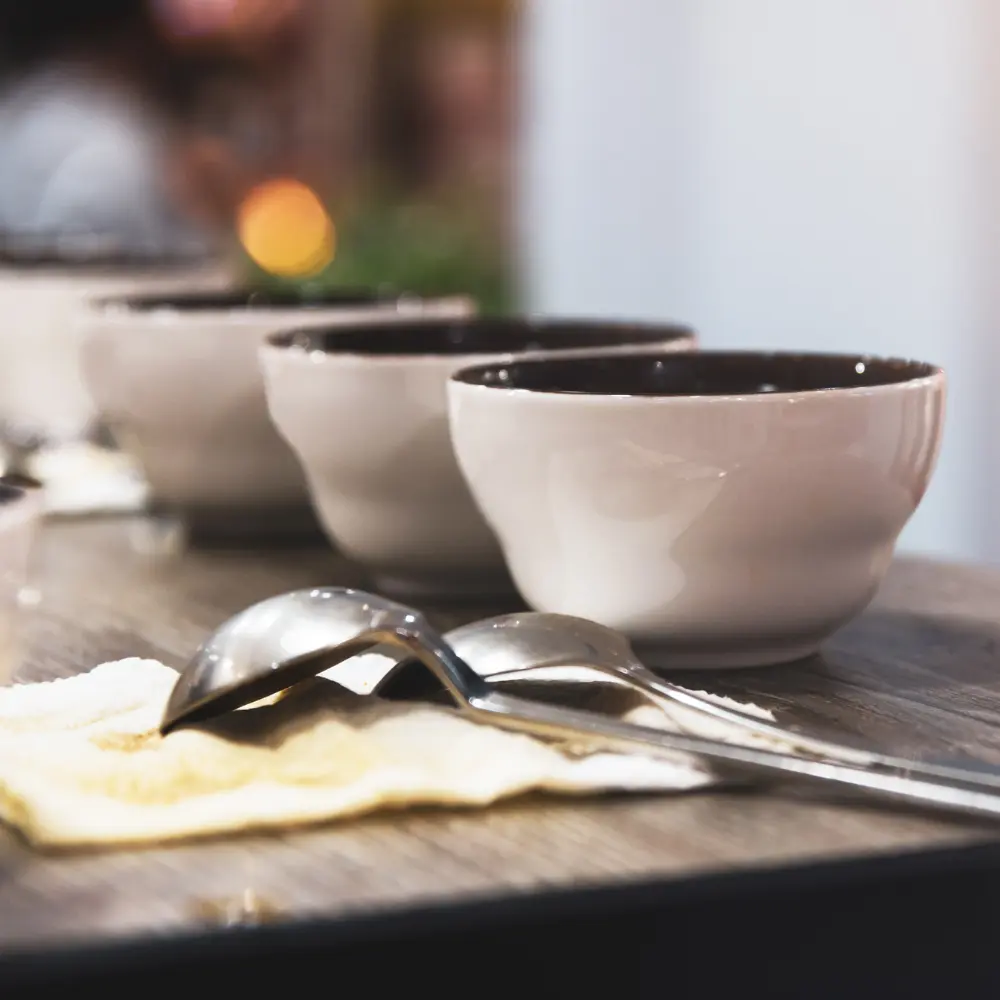
To acquire the proficiency of how to cup coffee effectively, you will require certain indispensable tools. These tools facilitate consistency and precision throughout the cupping process, and they encompass:
- Cupping Bowls: Ideally, use standardized cupping bowls fashioned from glass or ceramic, with a capacity of 7-9 ounces. You will require one bowl for each sample.
- Cupping Spoons: Large, deep-bowled spoons made of stainless steel or silver are preferred, as they allow for easy sampling without compromising the flavor.
- Grinder: A high-quality burr grinder is imperative to obtain a consistent grind size for all samples.
- Scale: A digital scale with at least 0.1-gram accuracy is essential for precise measurement of beans and water.
- Hot Water Kettle: A temperature-controlled kettle is recommended to ensure the brewing water is consistently heated to the proper temperature (200-205°F or 93-96°C).
- Timer: A timer assists in maintaining uniform brewing times across all samples.
- Cupping Forms: Standardized forms or score sheets enable you to record your observations and evaluate each sample based on a consistent set of criteria.
Step-by-Step Guide to the Coffee Cupping Procedure
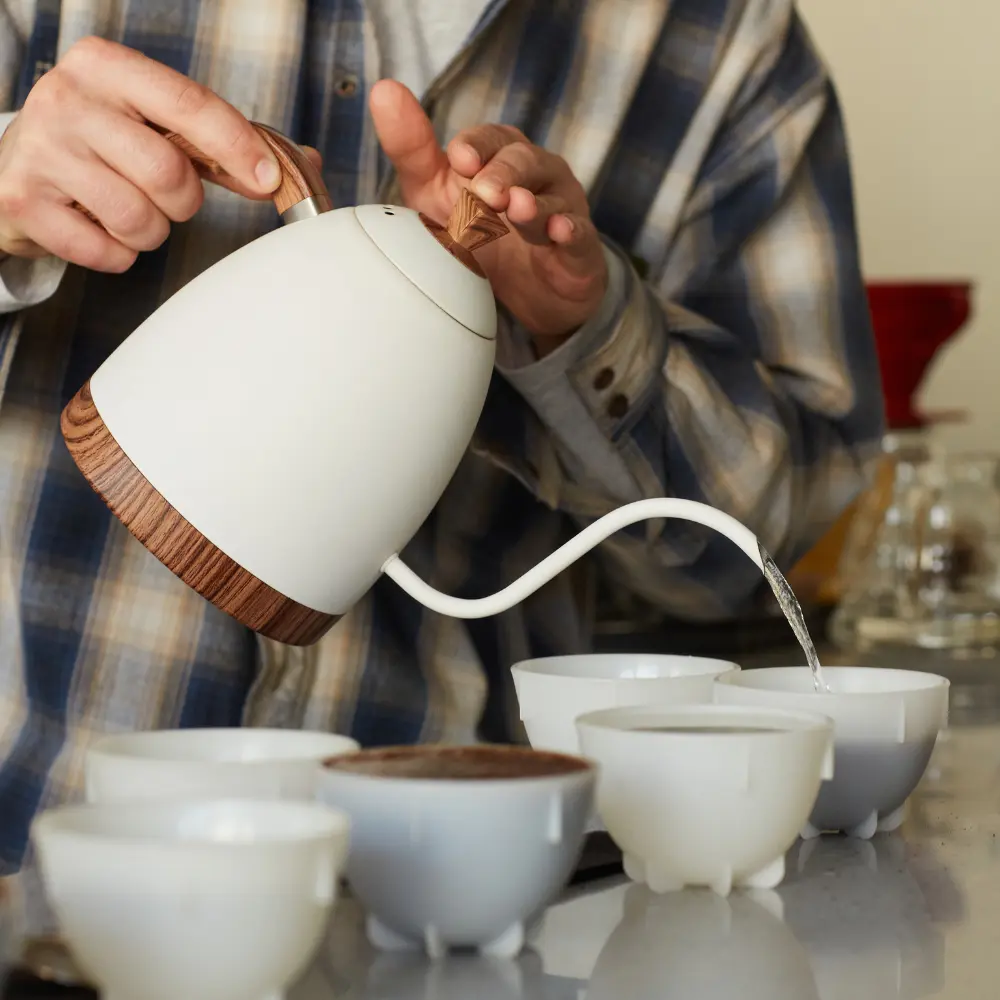
Once you have your beans prepared and your tools gathered, it’s time to start learning how to cup coffee!
Just follow these simple steps:
- Place the ground coffee into each cupping bowl.
- Take a deep breath and assess the dry aroma of the coffee by gently shaking the bowl. Write down what you smell in the cupping form.
- Pour hot water into each cupping bowl and ensure all the grounds are saturated. Begin timing as soon as you start pouring the water.
- Allow the coffee to steep for 3-5 minutes. During this time, a crust will form on the surface of the coffee.
- After 4 minutes, break the crust by pushing the grounds back with your cupping spoon while simultaneously smelling the aroma that’s released. This is called “breaking the crust.”
- To ensure a clean-tasting experience, skim off any remaining grounds and foam from the surface of each bowl.
- Let the coffee cool down for a few minutes, This will allow you to evaluate the flavors and aromas without scalding your palate.
- Taste each sample by taking a spoonful of coffee and slurping it with enough force to spread the liquid across your entire tongue. This action allows you to experience the full range of flavors and aromas present in the coffee.
- Evaluate and record your observations on the cupping form while tasting each sample. Consider factors such as acidity, body, flavor, aftertaste, and balance. If possible, taste each sample multiple times as the coffee cools, as the flavors may change at different temperatures.
- After you’ve tasted all the samples, compare your notes and discuss your observations with fellow tasters, if applicable. This step can provide valuable insights and help you refine your palate further.
- Finally, assign each coffee a score based on your evaluation, using a standardized scoring system such as the Specialty Coffee Association (SCA) cupping protocol. This step allows you to compare the samples objectively and determine their overall quality.
With these steps, you’ll be on your way to becoming a master of cupping coffee. With time and practice, you’ll develop a refined palate and a deeper appreciation for the complex world of flavors and aromas.
Evaluating Coffee Through Cupping
Coffee cupping is an essential process for evaluating and comparing the various attributes of coffee, such as its aroma, flavor, body, and acidity. In this section, we will explore the SCAA Coffee Taster’s Flavor Wheel, an invaluable resource for identifying and describing the complex and nuanced flavors and aromas present in coffee. We will also discuss how to recognize defects and imperfections in coffee beans and delve into the scoring and rating quality process.
The SCAA Coffee Taster’s Flavor Wheel
The SCAA Coffee Taster’s Flavor Wheel is a widely recognized tool that helps tasters identify and describe the various flavors and aromas present in coffee. This circular wheel features an extensive range of descriptors that are arranged in two sections: the inner wheel contains general flavor categories, while the outer wheel provides more specific descriptors for each category. (2) For instance, the inner wheel might have a category like “Fruity,” while the outer wheel will contain descriptors such as “Dried Fruit,” “Citrus Fruit,” or “Sour.”
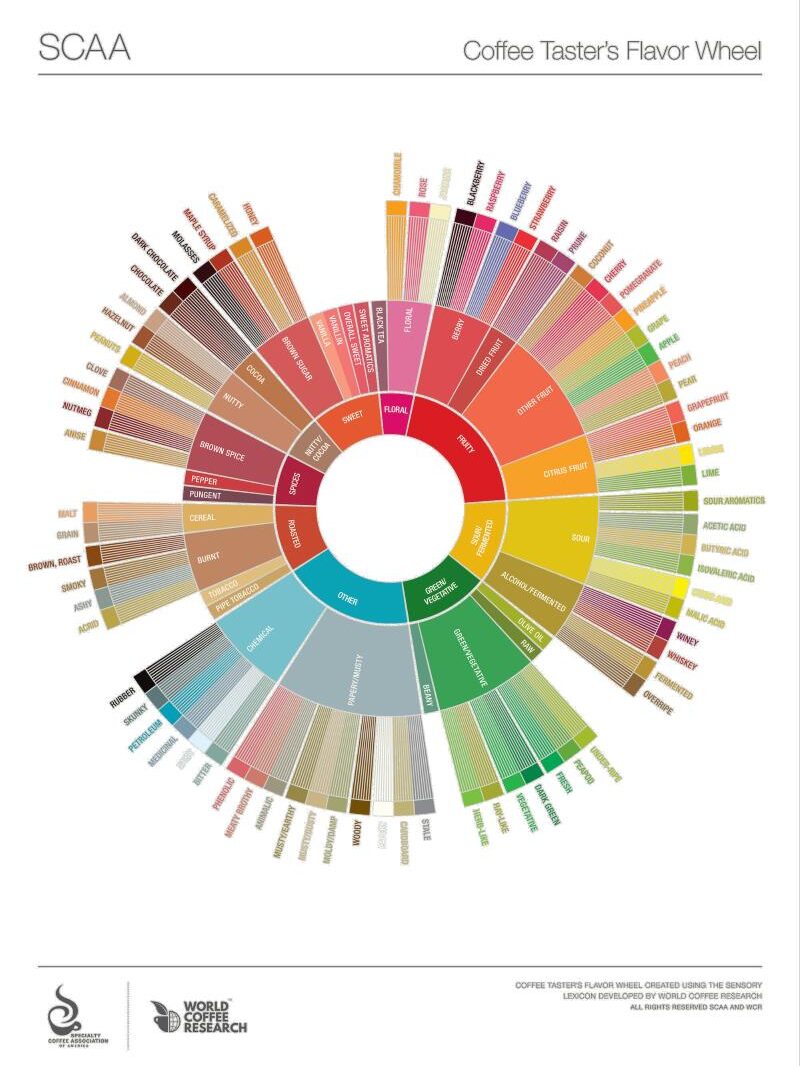
By using the SCAA Coffee Taster’s Flavor Wheel during cupping sessions, tasters can develop a more precise and consistent vocabulary for describing their experiences, making it easier to communicate and compare their observations with others. The wheel is a valuable resource for coffee lovers and professionals alike, helping to deepen their appreciation for the wide range of flavors and aromas available.
Identifying Aromas, Flavors, and Defects
During this professional tasting process, tasters pay close attention to the various aromas, flavors, and potential defects present in the coffee. Aromas are usually evaluated during the dry fragrance, wet aroma, and crust-breaking stages of the cupping procedure, while flavors are assessed while tasting the brewed coffee.

A variety of aromas and flavors exist, including fruity, floral, nutty, chocolate, caramel, and earthy, among many others. Recognizing and describing these attributes can greatly enhance a taster’s understanding and appreciation of coffee.
It is also important for tasters to identify defects and imperfections in coffee beans. Defects can result from various factors, such as poor cultivation practices, improper processing, or inadequate storage. Musty, moldy, or fermented flavors, as well as off-putting aromas like rubber or petroleum, are common defects that tasters should be able to detect.
By identifying and understanding the causes of these defects, professionals can work to address the underlying issues and improve the overall quality of their beans.
Scoring and Rating Coffee Quality
To evaluate quality objectively, tasters often use standardized scoring systems, such as the SCA Cupping Protocol, which assigns numerical scores to various aspects of the coffee, including aroma, flavor, aftertaste, acidity, body, and balance. (3)

The SCA Cupping Protocol uses a 100-point scale, with higher scores indicating better quality. Specialty-grade coffee has a score of 80 or above, while scores below 80 are classified as commercial grade. By consistently scoring and rating quality, tasters can compare different coffees and make informed decisions about sourcing, roasting, and brewing.
Using a standardized scoring system, along with tools like the SCAA Coffee Taster’s Flavor Wheel, allows professionals to develop a shared language for evaluating and discussing coffee, fostering a deeper understanding and appreciation of the many nuances that make each cup unique.
Developing Your Coffee Cupping Skills
The art of cupping coffee is a perpetually progressing journey that mandates unwavering commitment, persistent practice, and an authentic ardor for coffee. As you refine your cupping coffee aptitudes, you will embellish your palate and augment your cognizance of the intricate realm of flavors and aromas. In this section, we will delve into diverse methods to enhance your skills, encompassing honing your palate for tasting, attending educational workshops and courses, and affiliating with coffee-tasting clubs and communities.
Training Your Palate for Coffee Tasting
Amongst the myriad of crucial elements involved in mastering the art of cupping coffee, refining your palate to discern and distinguish between the diverse flavors and aromas is paramount. To develop your palate, you can endeavor to taste an extensive assortment of coffees from diverse origins, processing methods, and roast levels. This exposure will aid you in becoming acquainted with the distinctive existing characteristics.

In addition to tasting a broad spectrum of coffees, you can also fine-tune your palate by tasting other victuals and beverages that possess exceptional flavors, such as fruits, spices, and chocolate. Be cognizant of their flavors, textures, and aromas, and strive to describe them utilizing the same diction you would for coffee. This drill will assist you in constructing a cognitive database of flavor references.
Attending Coffee Cupping Workshops and Courses
An alternative approach to developing your coffee cupping skills is by participating in workshops, courses, or seminars hosted by seasoned professionals. These events offer a practical learning experience that allows you to practice cupping with the guidance of experts who can provide you with constructive feedback and valuable insights.

Many specialty coffee organizations and roasters provide cupping workshops and training programs, encompassing introductory classes for novices and advanced courses for experienced cuppers. Notable programs include those offered by the Specialty Coffee Association (SCA), the Coffee Quality Institute (CQI), and several regional coffee associations.
Joining Coffee Tasting Clubs and Communities
Joining a coffee-tasting club or community is yet another excellent way to refine your cupping skills while connecting with other people who share your zeal. These clubs often arrange regular cupping events, where members can sample and evaluate a diverse range of coffees in a relaxed, collaborative environment.

By taking part in these events, you will have the opportunity to practice cupping with various coffees, receive feedback from fellow tasters, and learn from the shared experiences and viewpoints of the group. Moreover, it can provide you with access to valuable resources, such as expert advice, educational materials, and networking opportunities.
- Simms, Jessica (Author)
- English (Publication Language)
- 70 Pages – 08/14/2017 (Publication Date) – Independently published (Publisher)
By committing yourself to the continuous process of mastering the art of cupping coffee, you will cultivate a refined palate, a deeper admiration for the complexities of coffee, and an augmented comprehension of the factors that contribute to its quality. Embrace the journey and relish the many rewards of honing your skills.
Coffee Cupping and the Specialty Coffee Industry
The art of cupping coffee plays a critical role in the specialty coffee industry, impacting various aspects of the coffee supply chain and influencing the overall quality of the end product. In this section, we will delve into the multifarious roles of this distinctive tasting technique in sourcing and purchasing, its impact on roasting techniques, and how cupping can shape the future of specialty coffee.
How Cupping Influences Coffee Roasting Techniques
Coffee cupping also exerts a profound influence on the development of roasting techniques. Roasters employ cupping as a technique to evaluate and refine their roasting profiles, guaranteeing that they are eliciting the best flavors and aromas from each unique coffee.
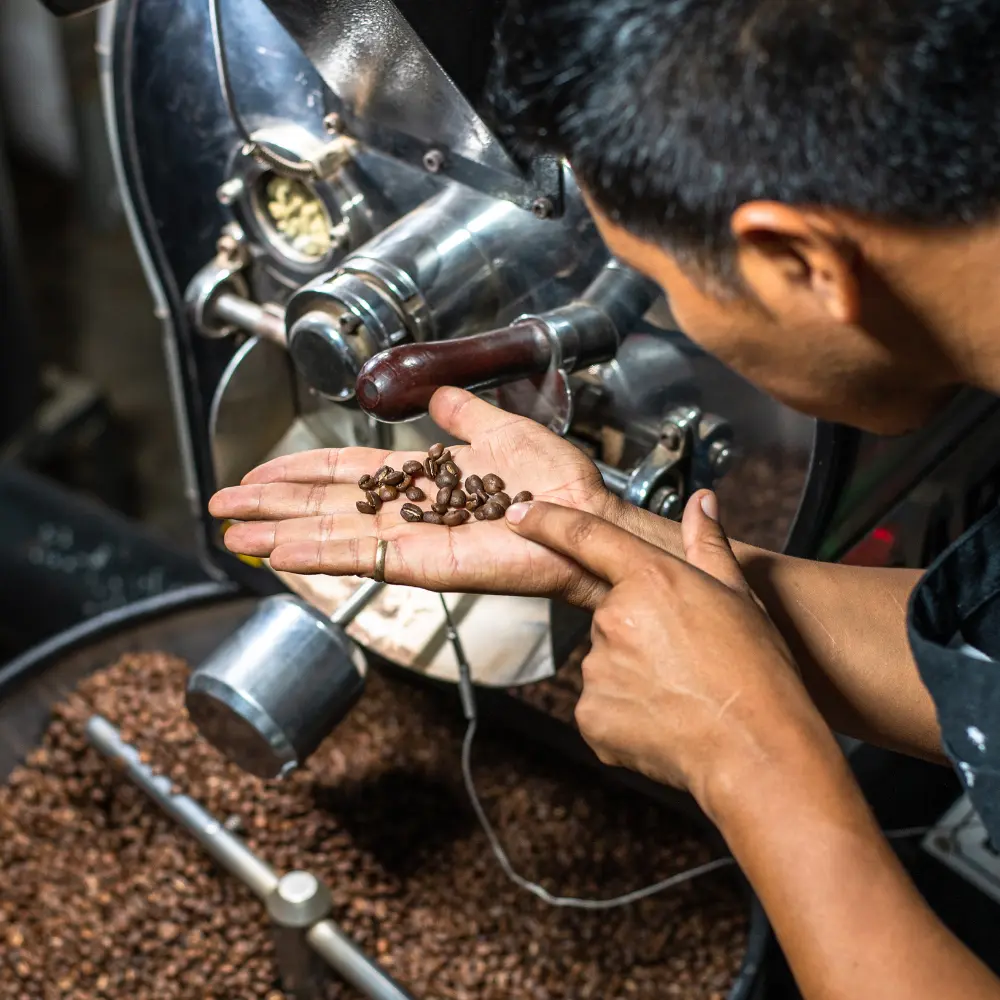
During the cupping process, roasters can evaluate various attributes of the coffee, such as acidity, body, and balance, and adjust their roasting techniques accordingly to optimize these characteristics. By continuously fine-tuning their roasting profiles based on cupping feedback, roasters can elevate the overall quality and consistency of their offerings.
Coffee Cupping and the Future of Specialty Coffee
As the specialty coffee industry persists in its evolution, cupping coffee will persist as an essential tool for driving improvements in quality and fostering innovations. Through cupping, professionals can discern emerging trends in flavors and processing methods and unearth new, exceptional coffees from lesser-known regions.
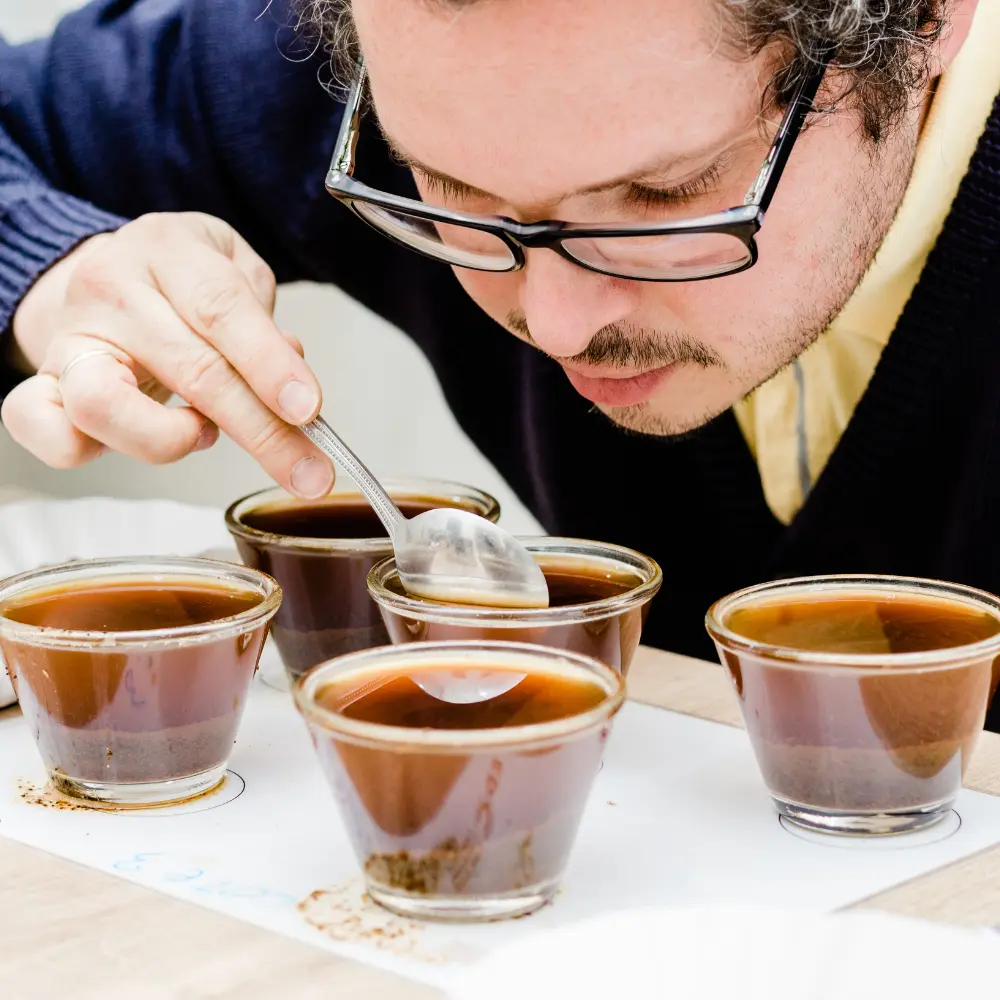
Moreover, cupping cultivates a shared language and understanding among professionals, promoting collaboration and knowledge exchange within the industry. As more individuals become involved in cupping, the collective expertise and appreciation for coffee will burgeon, facilitating the progression of the specialty coffee industry as a whole.
In summary, this professional tasting procedure is a non-negotiable aspect of the specialty coffee industry, impacting everything from sourcing and purchasing determinations to roasting techniques and industry trends. As coffee aficionados and professionals persist in refining their cupping skills and knowledge, the future of specialty coffee appears brighter than ever, brimming with untold possibilities and unparalleled quality.
Conclusion
The pursuit of comprehending the intricacies involved in learning how to cup coffee is indeed a gratifying voyage that exposes the esoteric subtleties of coffee’s gustatory and qualitative aspects. The cupping process, accompanied by honing one’s palate and delving into the realm of coffee, ultimately facilitates a profound admiration for the heterogeneous tastes, fragrances, and idiosyncrasies that render each cup of joe distinct. Irrespective of whether you happen to be an amateur coffee connoisseur or an accomplished professional aspiring to enhance your proficiency, this tasting technique provides an inexhaustible repository of invaluable insights and enthralling encounters that are bound to enrich your ardor for this exceptional beverage.
FAQ
Is coffee cupping only for professionals?
No, anyone can learn this tasting technique. However, it requires practice and dedication to develop the necessary skills and a refined palate.
How can one develop a refined palate for coffee cupping?
Developing a refined palate varies from person to person but typically requires consistent practice and exposure to a wide variety of coffee flavors and aromas over time.
What are some common coffee defects identified through cupping?
Common coffee defects identified through cupping include musty, moldy, or fermented flavors, and off-putting aromas like rubber or petroleum.
Are there certifications available for coffee cupping professionals?
Yes, there are certifications available for coffee cupping professionals, such as those offered by the Specialty Coffee Association (SCA) and the Coffee Quality Institute (CQI).













